Orchid oncidium: description, types and care
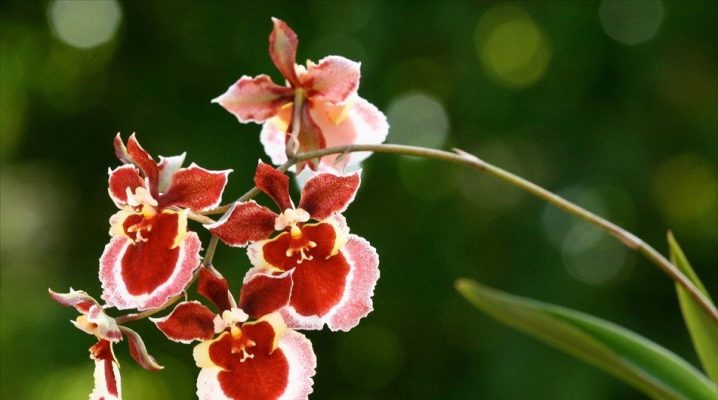
The oncidium orchid belongs to the Orchid family. Originally this plant, attracting brightness and beauty, from the forest, savannah or highlands of Central and South America. In our country, oncidium has perfectly adapted to living conditions and, with proper care, blooms beautifully, develops and pleases with its unusually beautiful appearance.
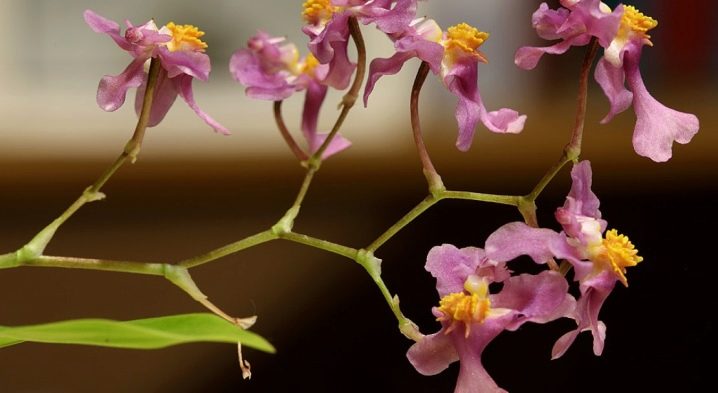
Peculiarities
The Oncidium Orchid is incredibly popular with breeders for its long and generous bloom that lasts for several months. At this time, several dozen inflorescences bloom on the peduncle of the plant, similar to little fairies circling over green leaves. Botanically speaking, the oncidium orchid is a herbaceous perennial plant. It has a long or shortened rhizome, with which it is fixed on natural hard surfaces: on stones or tree trunks. Above the root system of the oncidium are elongated pseudobulbs with a delicate bright green skin.
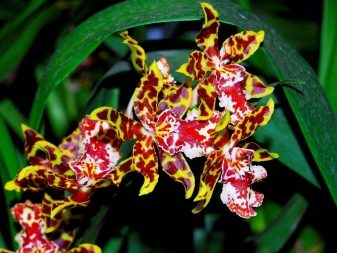

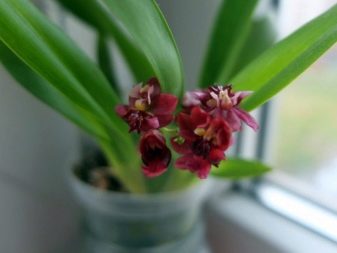
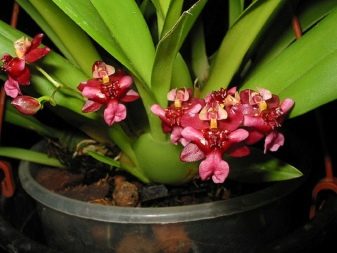
The height of the ground part of the flower develops from 10 to 40 centimeters. Above each pseudobulb, 1 to 3 sessile green leaves grow. The belt-like leaves of the plant have a compacted structure. The oncidium orchid blooms year-round and is accompanied by fragrant odors. The length of the peduncle is usually from 10 cm to 5 m, on its branches you can see densely planted not very large, but bright flowers. They are mostly yellow, brown and red.
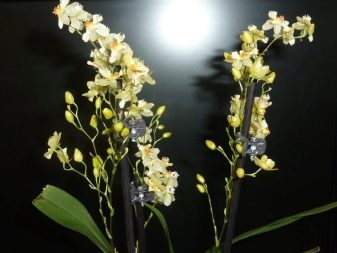
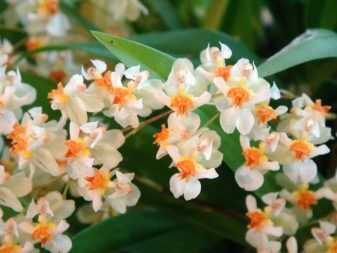

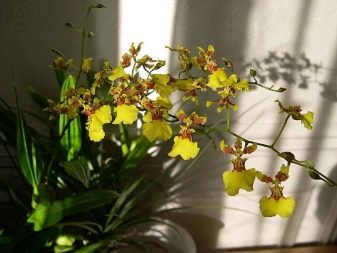
Varieties
Oncidium yellow
This type of orchid is characterized by unpretentiousness and rich flowering of a lemon-yellow hue. Graceful erect peduncles rise above the green foliage. The small size of the flowers is more than compensated by their number, and each peduncle bears from 10 to 25 buds. Their blooming into yellow flowers with a bright red spot occurs simultaneously. Flowering of yellow oncidium lasts at least 1 month, and cut flowers retain their fresh appearance for up to 2 weeks.
-
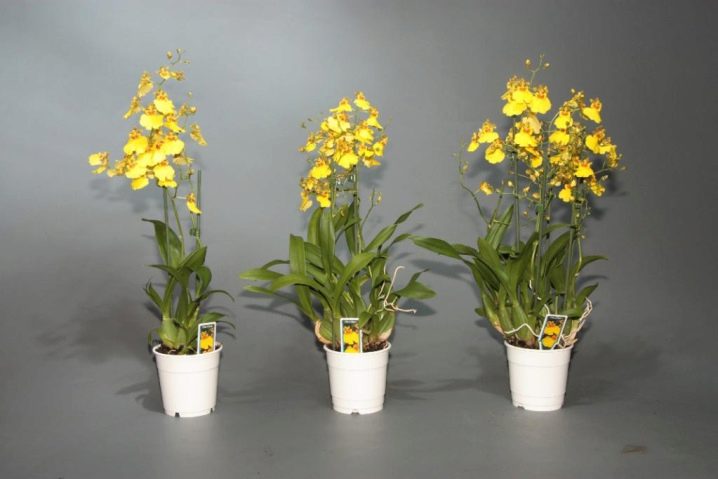
Oncidium "Sweet Sugar"
Oncidium "Sweet Sugar" was bred specifically for indoor conditions. The hybrid is characterized by excellent decorativeness, which does not require special efforts in terms of care. The leaves of the plant are not wide with sharp tips, having a juicy color. The erect peduncle branches out as it grows, and dozens of buds bloom one after another. The most remarkable part of the flower is the large lip with a brownish-red spot at the base.
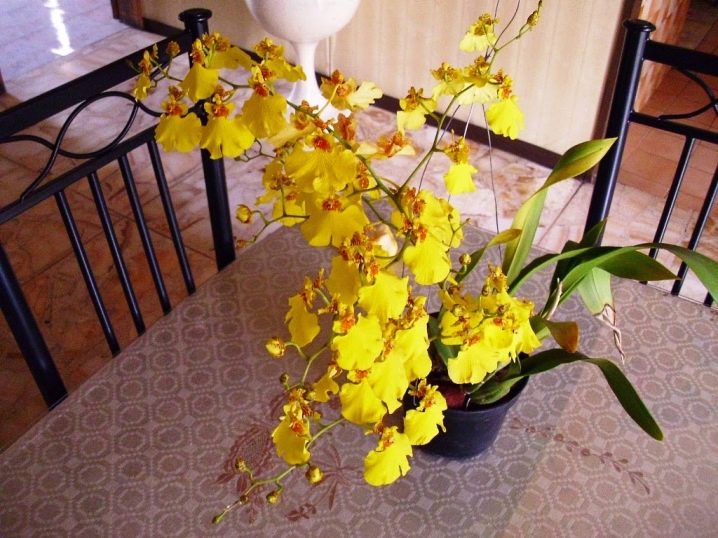
Oncidium "Twinkle Red Fantasy"
During flowering, this small orchid becomes strewn with many small pale pink flowers with a diameter of 1-1.5 cm. People call the hybrid "Fragrant Orchid", because in the morning it emits the most delicate and sweet aroma. On the peduncle, the plants bloom from 30 to 50 buds, and the duration of the lush flowering is about 3 weeks.
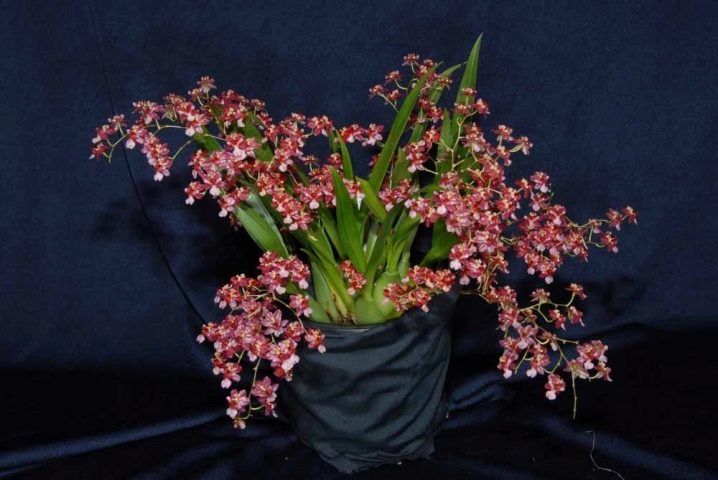
Oncidium "Popcorn Haruri"
A miniature orchid variety, unpretentious in care. During the flowering period, "Popcorn Haruri" pleases with small white-yellow-lilac flowers. The size of the flower is 1-1.5 cm. The plant grows 15 cm in height.
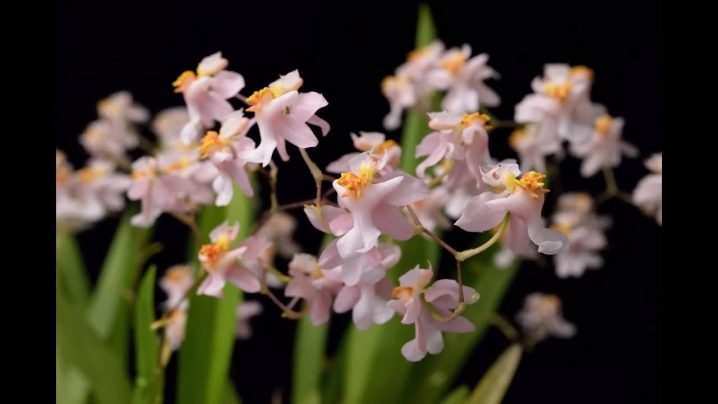
Oncidium "Bird-billed"
A small compact orchid blooms with small yellowish-creamy-brown flowers with a vanilla chocolate scent. Peduncles are formed in length up to 60 cm and are overgrown with racemose inflorescences.Leaves are thin, up to 30 cm long. The flowering time of this variety falls on the autumn-winter period.
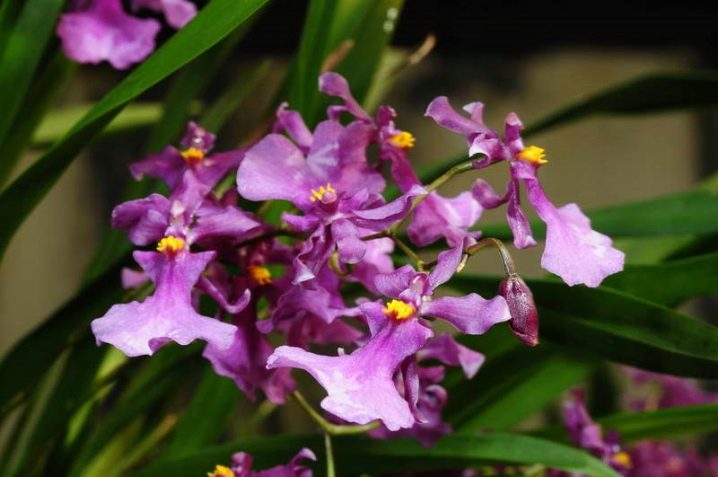
Landing
To plant an orchid, it is necessary to choose a light soil that will provide air access to the root system. One of the most suitable options is a mixture of natural pine bark, perlite and charcoal. You can also use ready-made orchid primer. For planting oncidium orchids, it is better to choose a plastic or ceramic pot. Ideally, it will be a clay container without glaze. Planting an orchid is as follows.
- First, you need to spill the plant with water and wait until its roots soften. This will take about 15 minutes.
- Then you need to carefully remove the orchid from the pot along with the lump of the substrate. It is necessary to act gently, without sudden movements, slightly swaying the flower along with the soil.
- In advance, you should prepare a new pot with soil and pour a drainage layer into it in an approximate proportion: 50/50.
- It is important to consider that oncidium is a pyramidal orchid, its shoots grow to one side. Therefore, the plant is not planted in the center of the pot, but closer to its edge.
- Before planting, the plant must be examined for rotten roots that need to be removed.
- Next, we plant only the roots of the orchid in the ground. Bulbs and rhizomes remain on the surface.
- If necessary, the orchid is fixed with special supports.
- The planted orchid must be shaded and refrain from watering for a week.
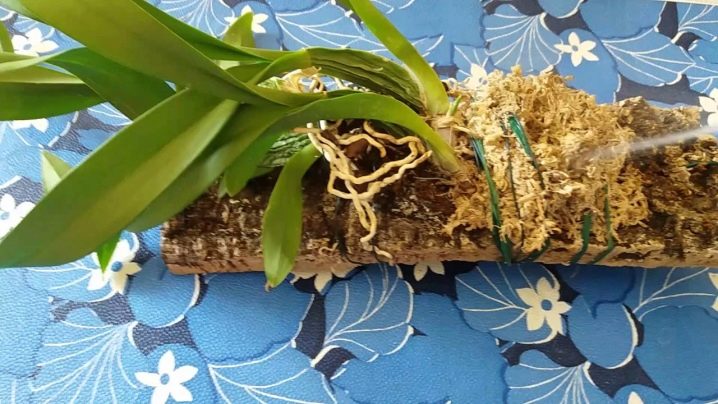
It is not recommended to transplant the oncidium orchid without special need. Ideally, this should be done no more than once every 3 years. Exceptions are cases of premature soil depletion or root system disease.
Optimal growing conditions
In order to enjoy the flowering and healthy appearance of oncidium, it is necessary to observe the correct conditions for growing and maintaining this plant.
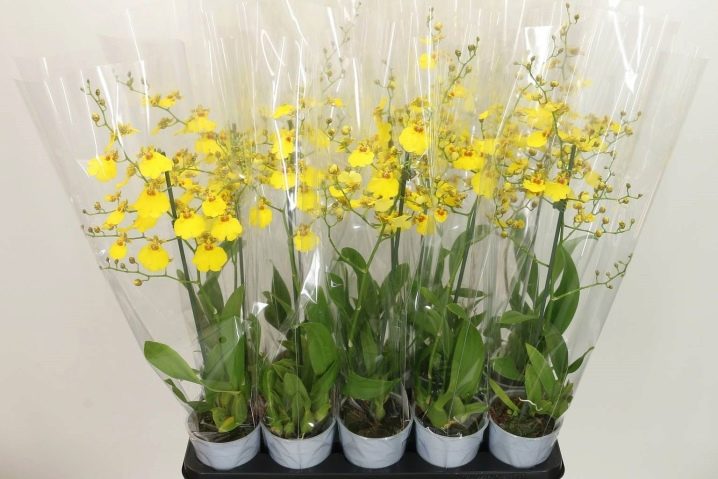
Lighting
Orchids should be under bright light. In this case, it is necessary to avoid direct exposure to midday sunlight and use diffused light. The oncidium pot is best placed on the east or west side. When placed on the north side, the plant will definitely need additional illumination with phytolamps or fluorescent lamps.
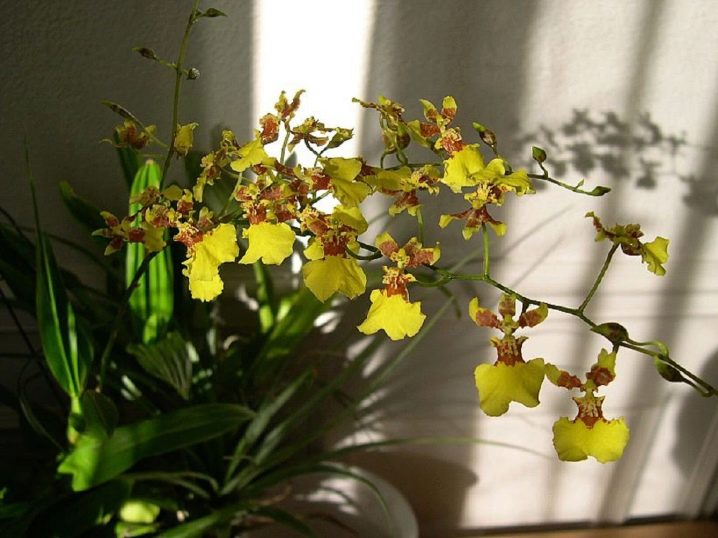
The fact that the plant does not receive enough light in sufficient quantities is evidenced by the appearance of the leaves. Ideally, they have a uniform, deep green color. If the shade of the leaves becomes lighter, then the plant is experiencing a lack of lighting. The appearance of spots on the leaf plates indicates a burn with ultraviolet rays.
Temperature
The optimal temperature regime depends on the type and origin of oncidiums. Their entire community, depending on the temperature regime, can be divided into 3 types.
- Heat-loving. For them, the maximum acceptable temperature in summer is in the range from +25 to +30 degrees Celsius. In winter, the minimum acceptable temperature ranges from +15 to +18 degrees Celsius. The temperature difference between day and night is about 3-5 degrees Celsius.
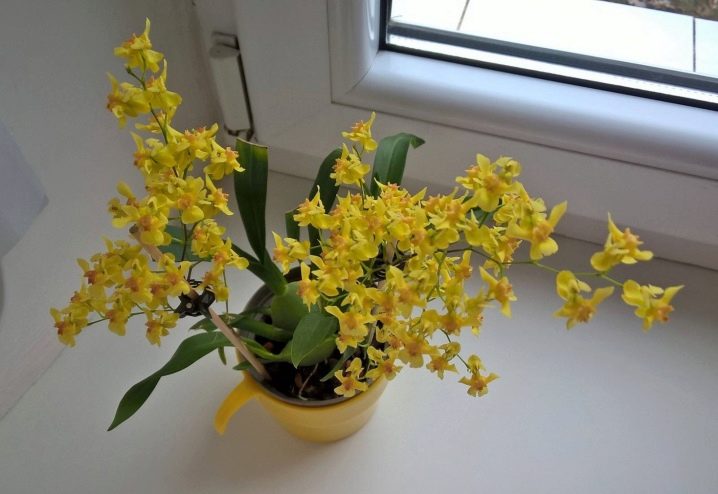
- Moderate. The optimal summer daytime temperature for them is from +18 to +22 degrees Celsius. The minimum winter time should not fall below +12 to +15 degrees Celsius.
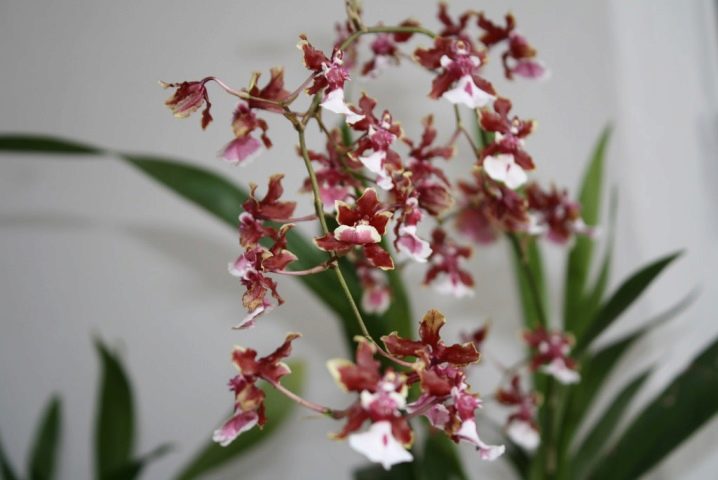
- Cold-loving. The optimum summer temperature for them is not higher than +22 degrees Celsius. Winter temperature minimum is in the range from +7 to +10 degrees Celsius.
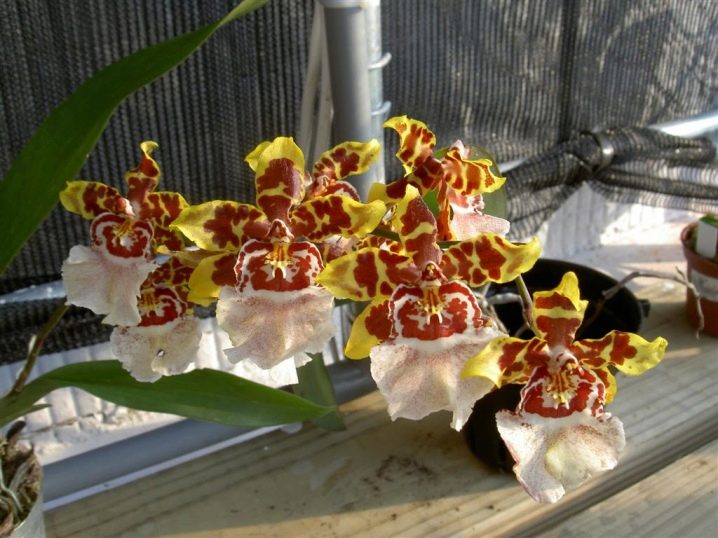
Humidity
If the temperature regime in the room where the oncidium orchid lives is normal, then the air humidity can be 40% or higher. If the temperature begins to rise above normal, then the air humidity must be increased with the help of special humidifiers, spraying or wiping the leaves with a damp cloth. If the room is cold, then it is necessary to ensure that the humidity is not too high.Excessive humidity can lead to fungal infection of the plant. Ventilation is recommended as a preventive measure to prevent high humidity in the room where oncidium grows. In this case, it is necessary to protect the plant from drafts.
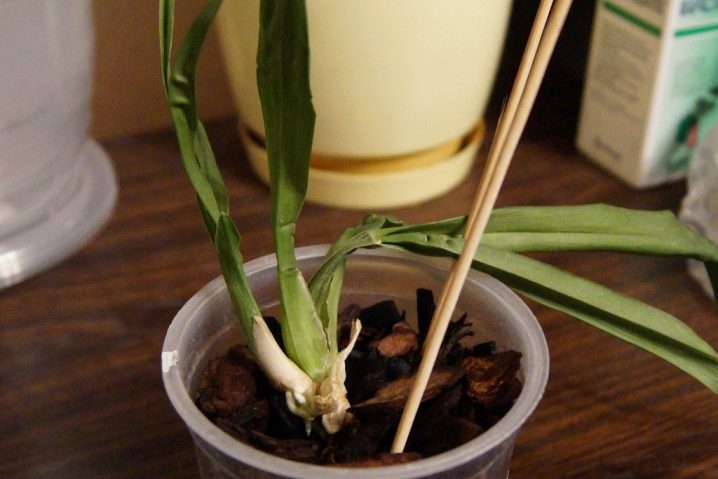
How to care?
Caring for the oncidium orchid at home consists in its regular feeding and proper watering.

Top dressing
Top dressing is done as the shoots grow. As soon as the formation of pseudobulbs begins, fertilization stops and resumes with the beginning of the growth of the peduncle, and ends when the first flower blooms. Oncidiums are very sensitive to the amount of fertilizer applied. To feed them at home, you can use preparations labeled "orchids" on the packaging. To obtain a greater effect, it is necessary to carry out both root feeding and on the leaf in an alternating order.
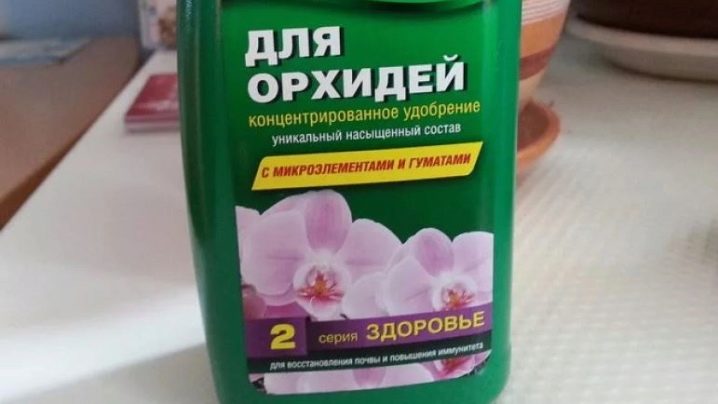
Watering
Watering oncidium depends on the stage of its growth. During the appearance of the pseudobulb and until the formation of a sprout from it, the flower must be watered often and abundantly. The bottom of the pot must be perforated to drain excess liquid, otherwise the plant will start to rot. It is best to water it by immersing the oncidium in warm, settled water. It is recommended to water the plant as the soil dries out, but it should not be allowed to dry out too much. Watering stops as soon as a new pseudobulb begins to form, otherwise flowering will not occur. Watering resumes during the growth of a new peduncle.
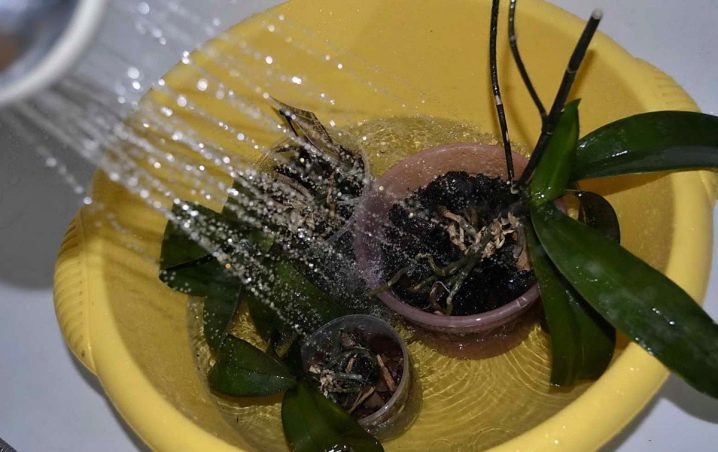
It is worth noting that a large number of pseudobulbs will oppress the plant, it will not have the strength to bloom. A shriveled or shriveled pseudobulb during flowering is normal. At the end of flowering, watering is less abundant.
Reproduction
At home, oncidium reproduces vegetatively, that is, by dividing it into parts during transplantation. The division is carried out after the plant has 6 or more pseudobulbs, since a viable orchid division must contain at least 3 shoots. The division is carried out with a sharp disinfected knife, and the living place of the cut is sprinkled with coal. Before dividing, it is necessary to let the soil dry out and after transplanting, refrain from watering for 7-10 days. This will allow the wound to dry out painlessly.
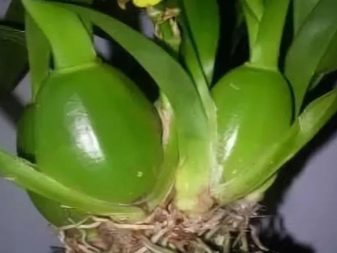
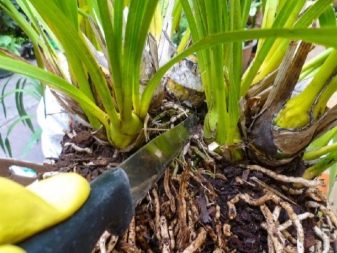
Diseases and pests
Mealybug
The appearance of white lumps, similar to cotton wool, on the leaves of oncidium may indicate an infection of the plant with these insects. To get rid of them, it is necessary to carry out the following measures: gently wipe the surface of the sheet with alcohol using a cotton swab or cloth, and then treat it with Aktara or Fitoverm biopreparation.
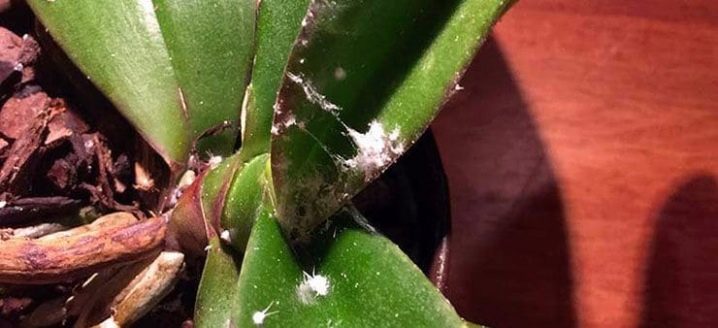
Shield
This is a very unpleasant pest, the adults of which are protected from the effects of insecticides by a shell. They are removed mechanically using cotton pads or a sponge soaked in soapy water. After soaping the oncidium, it is rinsed with warm water. It is necessary to treat the whole plant completely with a soapy solution, since even one surviving larva can do great harm. The use of systemic insecticides such as "Aktara" in the fight against the scabbard is still possible, but it should not be a one-time event. To obtain a visible result, it will be necessary to carry out processing several times.
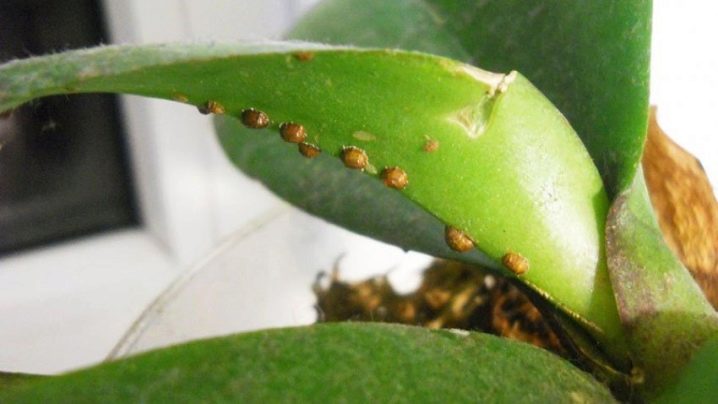
Spider mite
A sign of an orchid lesion with a spider mite is the presence of white dots and a thin web on the sheets. To get rid of this, the affected areas are wiped with soapy water using a cotton pad, and then treated with Fitoverm. You can also use garlic and onion infusions to combat spider mites. To prepare them, you need to take 100 g of onion-garlic husks and pour 5 liters of water. After 3 days, a ready-to-use infusion is obtained, which is filtered and the plant is treated with it.
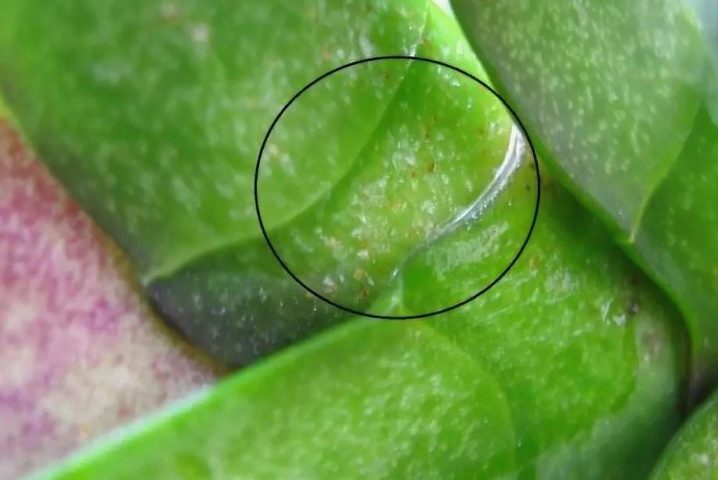
Thrips
The presence of thrips on the plant can be detected by the presence of yellow and silver scratches on the upper side of the leaf and by the presence of small black dots on the wrong side. To get rid of the orchid from this pest, it is necessary to treat the surface of the plant with alcohol or any alcoholic tincture, and then rinse it under the shower. After that, the oncidium is treated with a preparation of the Fitoverm type. To consolidate the result, this procedure must be repeated after 10-12 days.
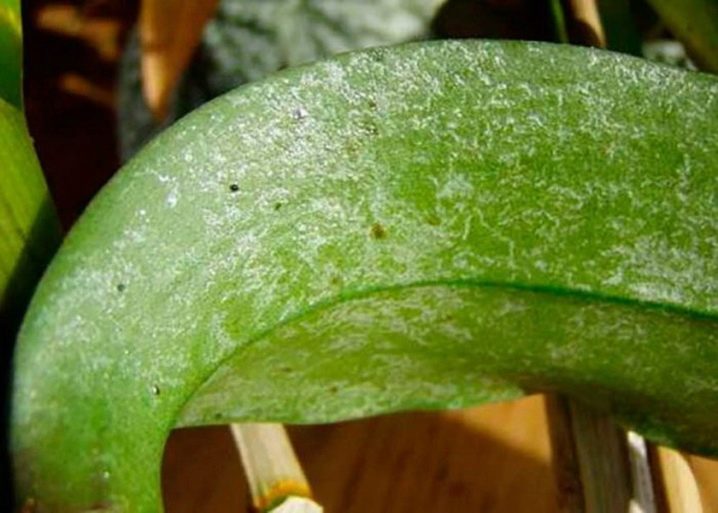
Whitefly
Outwardly, this pest looks like a small white butterfly that takes off at the slightest danger. You can try to get rid of it with a fly trap (sticky tape). You can also use a mechanical method, collecting the pests with a vacuum cleaner or soaping the plant with soapy water, and at the end wash everything off. As drugs to combat whitefly are used: "Biotlin", "Inta-vira", "Mospilana", which are used 2-3 times with an interval of 7-10 days.
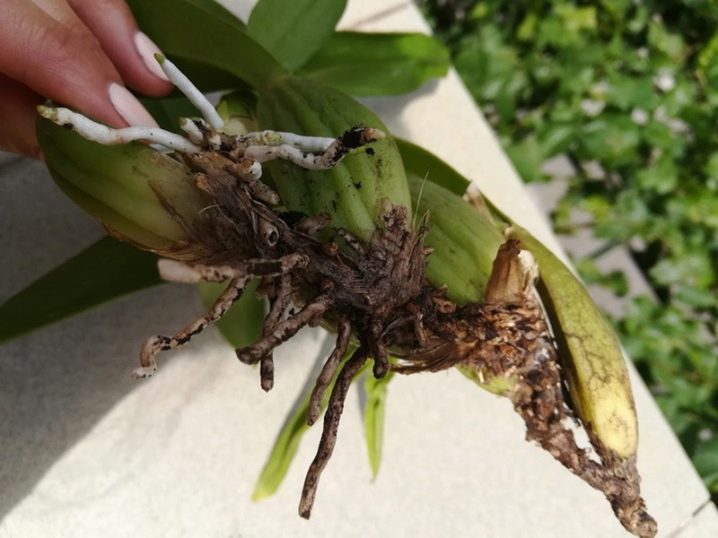
Bacterial rot and fungal diseases
Damage to orchids by harmful bacteria can be identified by brown leaves. Waterlogging and drafts contribute to the appearance of the disease. To get rid of damage, diseased leaves are cut off, and the plant itself is placed in a well-ventilated place. Additionally, the orchid is treated with "Fitosporin" by watering, dipping the root system into a solution or spraying.
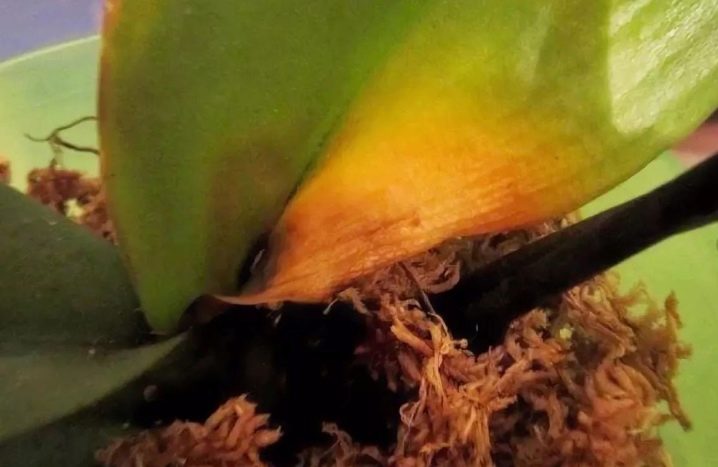
In some cases of rot lesions of the plants themselves and the root system, they may require serious resuscitation. To do this, the plants are removed from the pot and the root system is carefully examined, getting rid of rotten roots with disinfected scissors. Usually, after this procedure, very few roots remain. Then the plant is placed in a jar of water so that the growing point is above the water level. A jar with an orchid is placed in a bright place and observes the growth of the roots.
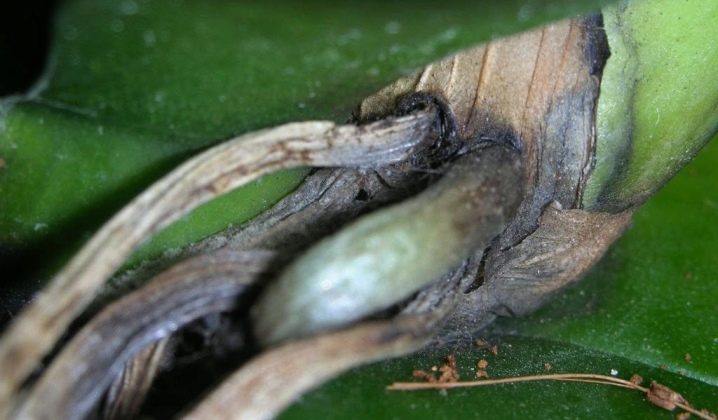
For information on how to properly care for the oncidium orchid, see the next video.































The comment was sent successfully.